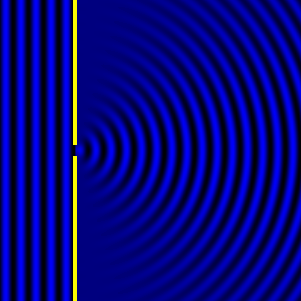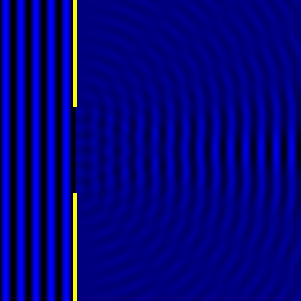Joe McKeown (Talk | contribs) |
Joe McKeown (Talk | contribs) |
||
| Line 70: | Line 70: | ||
</div> | </div> | ||
<!-- Page Content --> | <!-- Page Content --> | ||
| + | <div class="cam-container" style="background-color: #dddddd; color: #444444;"> | ||
| + | <section id="Project" style="padding-top: 10px; padding-bottom: 20px; margin-top: 0px;"> | ||
| + | <div class="container" style="background-color: transparent;"> | ||
| + | <div class="text-center"> | ||
| + | <h1>Using a DIHM to Quickly Analyse Co-Cultures</h1> | ||
| + | </div> | ||
| + | <div class="text-left" style="margin: -10px;"> | ||
| + | <h2>The Inception of the Concept</h2> | ||
| + | <p style="font-size: 18px;">Upon being asked to find the number of bacteria in a given sample, the response from members of our iGEM team has invariably been a long sigh and a plea to the realms of the supernatural. That most human quality - laziness - and flaws in traditional techniques, which we will revisit below, have led to us designing a potential solution in the form of a Digital Inline Holographic Microscope (DIHM).</p> | ||
| + | <br> | ||
| + | <br style="line-height: 10px;"> | ||
| + | </div> | ||
| + | </div> | ||
| + | </section> | ||
| + | </div> | ||
| + | |||
| + | |||
| + | |||
<div class="cam-container" style="background-color: #dddddd; color: #444444;"> | <div class="cam-container" style="background-color: #dddddd; color: #444444;"> | ||
<section id="DIHM" style="padding-top: 10px; padding-bottom: 20px; margin-top: 0px;"> | <section id="DIHM" style="padding-top: 10px; padding-bottom: 20px; margin-top: 0px;"> | ||
| Line 101: | Line 119: | ||
<br style="line-height: 10px;"> | <br style="line-height: 10px;"> | ||
</div> | </div> | ||
| + | </div> | ||
</section> | </section> | ||
</div> | </div> | ||
| Line 126: | Line 145: | ||
<ul style="list-style:none;"> | <ul style="list-style:none;"> | ||
<li>[1]: Diffraction Formalism, Wikipedia, as on 4th September 2017 at <a href="//en.wikipedia.org/wiki/Diffraction_formalism" style="color: #000;">http://en.wikipedia.org/wiki/Diffraction_formalism</a></li> | <li>[1]: Diffraction Formalism, Wikipedia, as on 4th September 2017 at <a href="//en.wikipedia.org/wiki/Diffraction_formalism" style="color: #000;">http://en.wikipedia.org/wiki/Diffraction_formalism</a></li> | ||
| − | <ul> | + | </ul> |
| + | </div> | ||
</div> | </div> | ||
</section> | </section> | ||
Revision as of 18:55, 4 September 2017
Using a DIHM to Quickly Analyse Co-Cultures
The Inception of the Concept
Upon being asked to find the number of bacteria in a given sample, the response from members of our iGEM team has invariably been a long sigh and a plea to the realms of the supernatural. That most human quality - laziness - and flaws in traditional techniques, which we will revisit below, have led to us designing a potential solution in the form of a Digital Inline Holographic Microscope (DIHM).
Digital Inline Holographic Microscopy
How does it work?
Digital holographic microscopy makes use of diffraction. This a physical phenomenon wherein objects (or apertures) in the path of a source of waves will create patterns in the waves. These patterns depend on the shape of the objects themselves. Since electromagnetic waves are, somewhat unsurprisingly, waves, it is possible to use the diffraction of light to create patterns that we can see.

- Diffraction pattern caused by a slit of width equivalent to one wavelength [1].

- Diffraction pattern caused by a slit of width equivalent to six wavelengths [1].
The above images show examples of patterns being formed in wavefronts by apertures in the path of otherwise uninterrupted waves. As can be seen by contrasting these images, the pattern created by a larger aperture is distinguishable from a smaller aperture's pattern. The particular distinctions can be described through mathematical formalisms. Thence, once the diffraction patterns have been created, it is possible to infer the shape and size of the objects that caused them, if we also know the wavelength of the light source and the distance from the sample at which the patterns were observed.
Co-Cultures: Bacteria and Algae can be Friends!
Go Together, Grow Together.
This section is still under development, but it will soon contain information regarding a co-culture comprising Chlamydomonas reinhardtii and Escherichia coli.
References
- [1]: Diffraction Formalism, Wikipedia, as on 4th September 2017 at http://en.wikipedia.org/wiki/Diffraction_formalism



